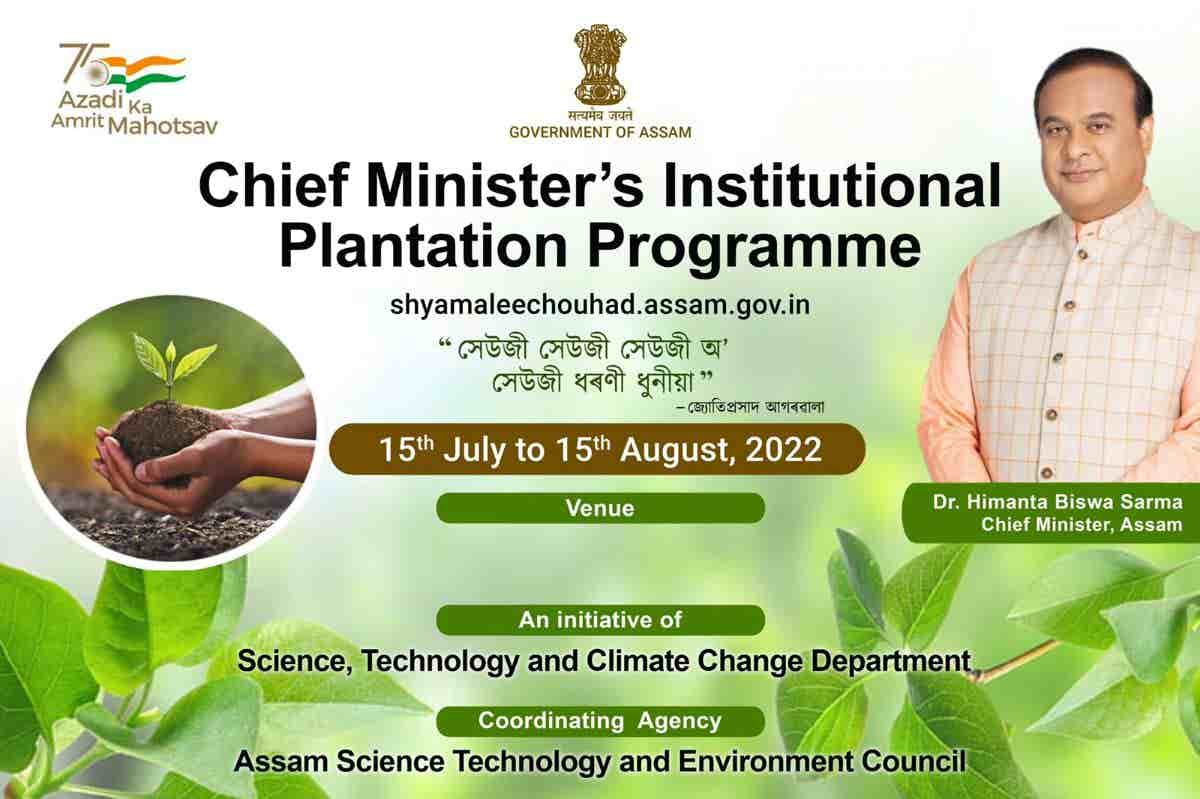Chief Minister’s Institutional Plantation Programme (CMIPP)
Brief of the Programme
Climate change is the most pressing global environmental challenge faced by humanity today. Temperature rise, extreme weather events, like heavy rainfall, drought like situations, in recent times are some of the indicators of climate change impact. Northeast lndia which is the confluence of Eastern Himalayan and Indo-Burma biodiversity hotspots is highly vulnerable to climate change owing to its strategic location, fragile ecosystem, trans-boundary river basin and socio demographic variables. However, plantation and natural regeneration of plants is the key to mitigate climate change. Therefore, a practical, sustaining and long lasting institutional plantation programme has been initiated by the Science, Technology and Climate Change Department encompassing all offices, educational institutions, autonomous councils, Panchayati Raj institutions etc. of Govt, of Assam under the banner “Chief Minister’s Institutional Plantation Programme” (CMIPP) which will be implemented from 15th July to 15th August 2022.
Purpose of the Programme
Enhance carbon stock through mass plantation.
Conservation of important native plant species including medicinaland fruit plants.
Beautification of institutional premises with ample greenery.
Creating awareness for collective participation in climate change mitigation.
Providing fresh fruit, nuts, etc.
Save environment and to beautify our lives.
Have cleaner air across the state.
Programme Outline
Plantation drive in Government institutional premises.
Government officials will adopt the plants and nurture it for 3 years.
All teaching staff, non-teaching staff and students of Educational Institutions will be part of CMIPP.
Will coincide with completion of the yearlong celebration of AZADI KAAMRIT MAHOTSAV.
Who can participate?
All employees under Government of Assam.
All teaching and non-teaching staff as well as students of educational institutions under Government of Assam.
All members of the autonomous councils/ bodies/ corporations/ organizations/ panchayati raj institutions/urban local bodies.
Stakeholders of the Programme
Chief Minister’s Institutional Plantation Programme
- All offices under Govt. of Assam.
- Autonomous Councils/ Bodies/ Corporations/ Organizations.
- Panchayati Raj Institutions/Urban local bodies.
- All Educational institutions under Govt. of Assam.
Place for Plantation

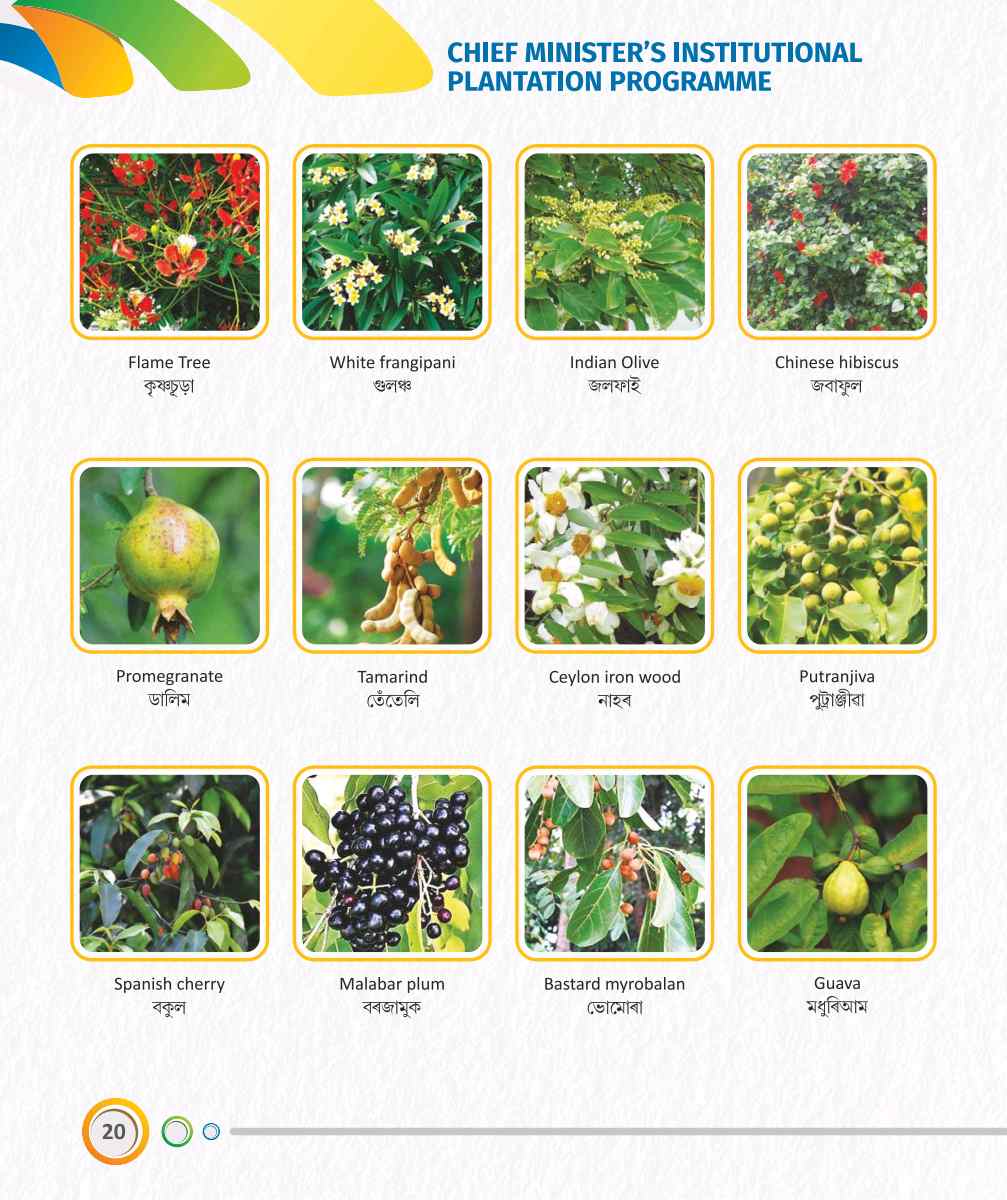

Finda suitable place for plantation in the campus.
Measure the area available for plantation.
Estimate the number of plant saplings to be planted.
How to carry out Plantation
Scientific preparation of the site – digging pit, applying organic manure, fencing, etc.
Suitable plant species from the suggested list provided in this booklet or locally available native plant species may be planted.
Preferred size (small/medium/big) of the plant species according to availability of space and aesthetic beauty of the campus.
Where to get the saplings?
Locally available plant saplings from homestead gardens.
From Nurseries, Social Forestry, Agriculture or Horticulture offices.
Plantation Guidelines
Choose a suitable site that is appropriate for the particular plant species. If the site is low land then raise the level of the site as per requirement looking at the ground level.
Maintain approximate spacing for plantation: Big tree 20ft.; Medium tree 15 ft. & Small tree 10 ft., Climber: It requires big host plant to climb over.
After collection of saplings, plant it within a day or two.
Cut the wrapping from top at one side and remove the sapling gently from its original wrapping with root mass.
Dig a hole on the selected site at least two-three times bigger than the root ball or root mass of the sapling.
Put some amount of dry organic fertilizer up to 6-8 cm height or raise the bottom of the hole to maintain the top level of the root mass of the sapling with the ground level.
Put thesapling in the middle of the hole carefully with root mass and make sure that the sapling is straight and plumb.
Backfll the entire hole with the existing soil and organic fertilizer and spray required water on the backfilled hole.
Gently compact the surface of the backflled hole and ensure that the sapling is properly planted.
If necessary a proper size bamboo guard is to be erected around the plant saplings to avoid damage by cattle or unwanted elements.
If the planted sapling does not survive then replace it immediately with a healthy one.
Consider the sapling as part of your family that needs regular monitoring till it attains a growth about 8 ft. height.
Suggestive List of Species for Plantation
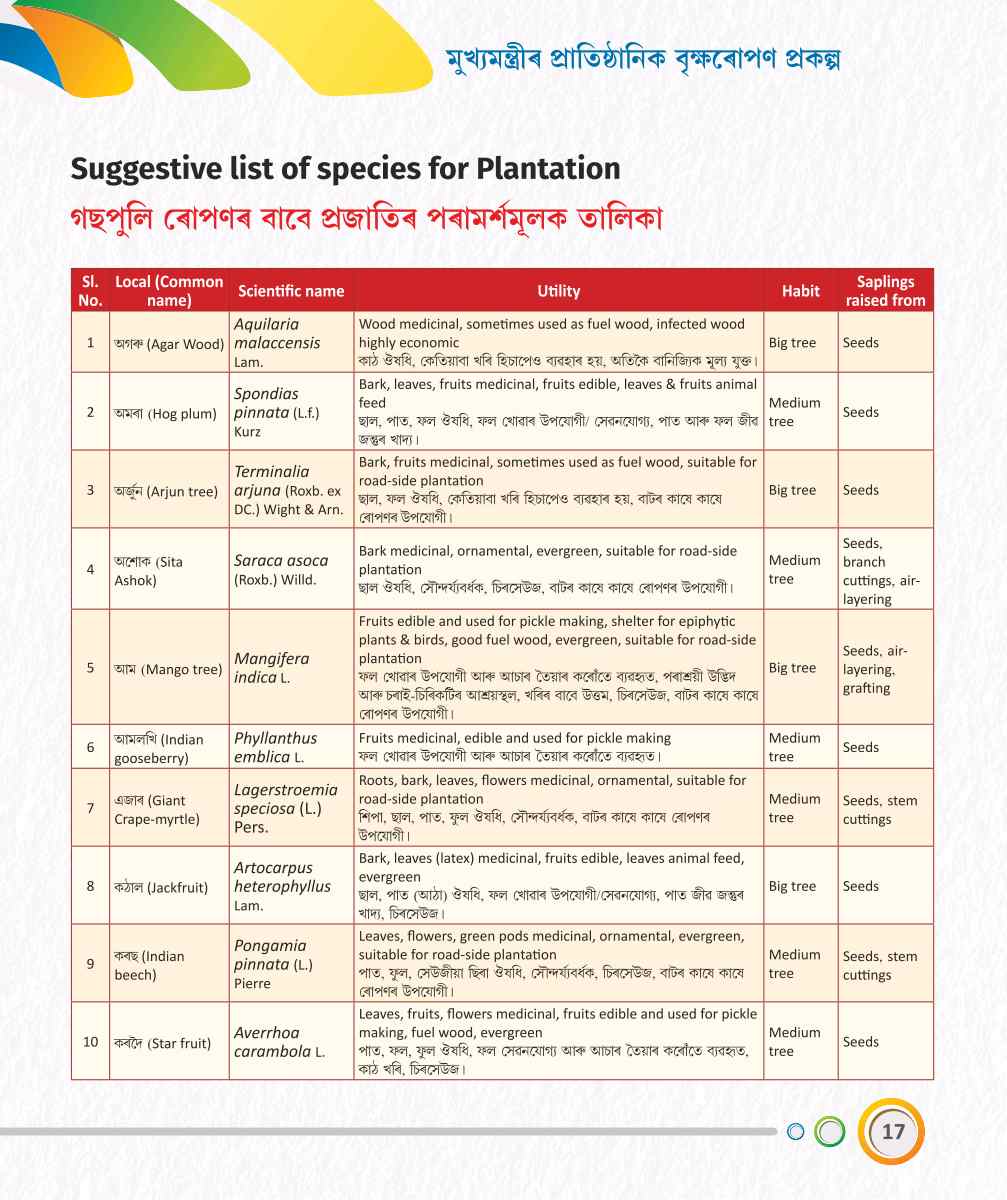
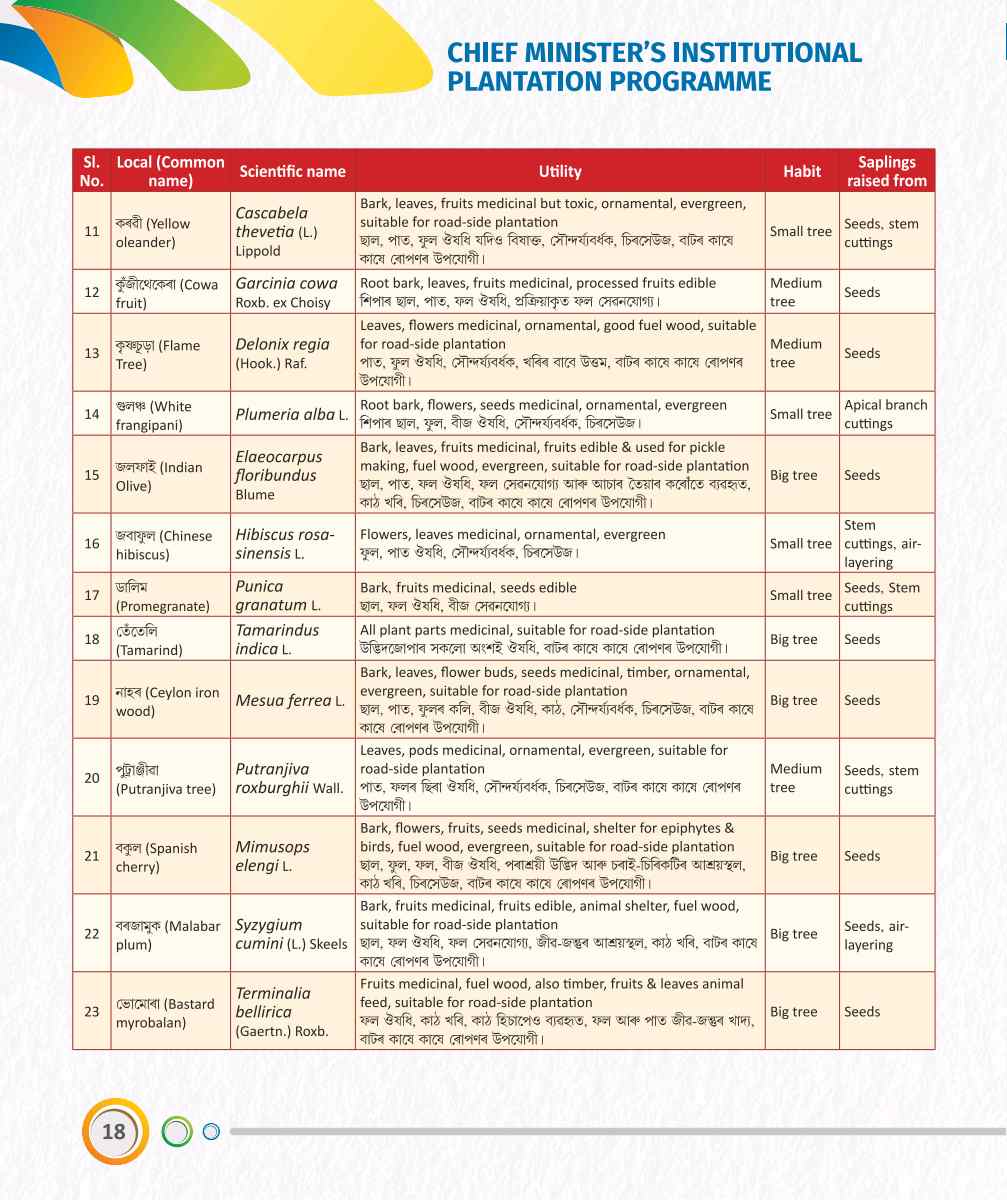
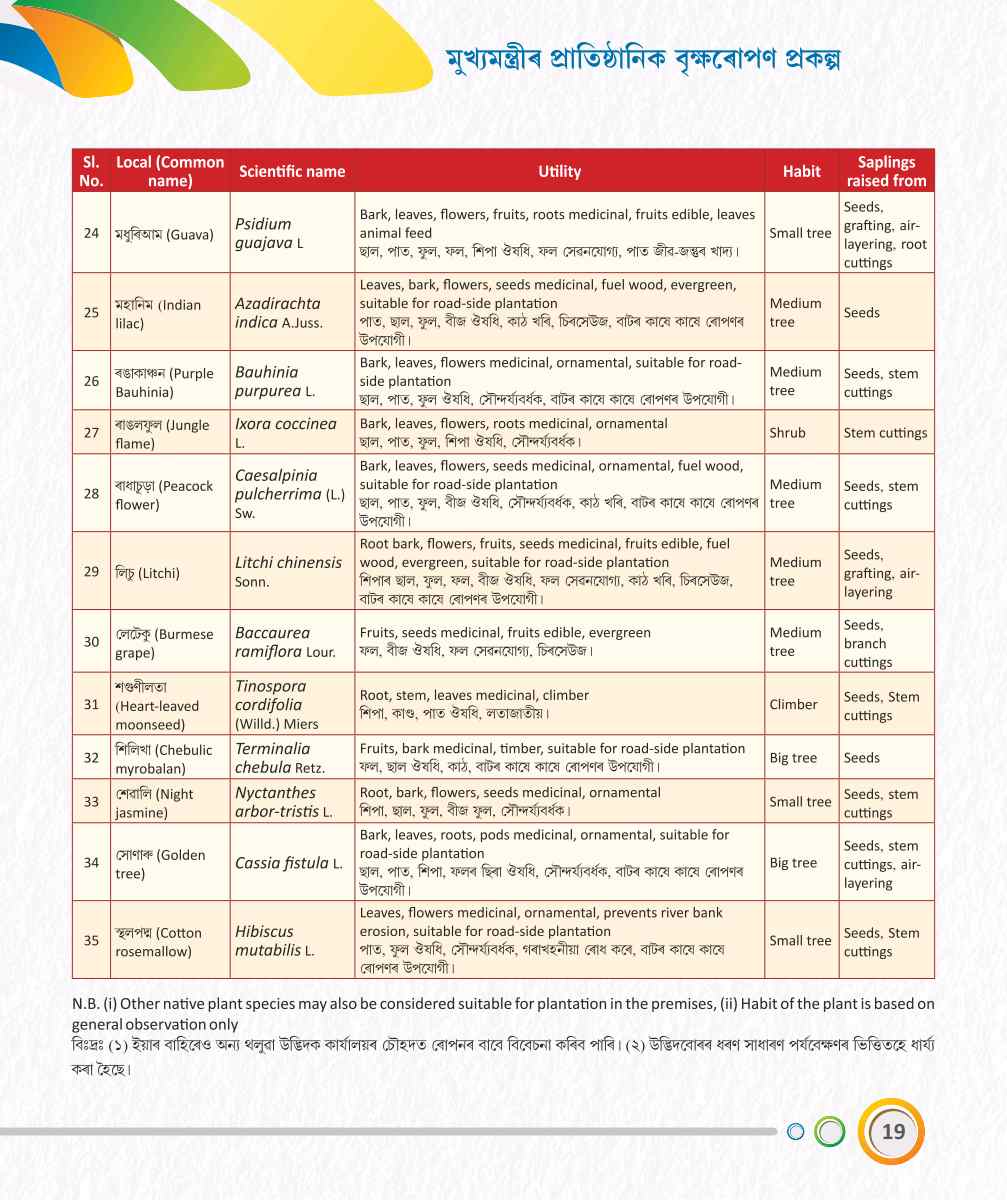
What to do after planting the sapling?
Open the mobile application and login with your user ID and password (the app can be downloaded from www.shyamaleechouhad.assam.gov.inor Google Play Store).
Take photographs of the plant through the mobile app which will be uploaded on the web portal- www.shyamaleechouhad.assam.gov.in with your location. If the permission to save locations of photos were not granted earlier the app will ask to allow to save the location. You have to allow the app to save your location.
These Geo-tagged photographs should have the details of-name of the plant species, common name, scierntific name, if available, utility of the plant.
The planter(s) has to regularly update the growth of the same planted saplings and upload the geo-tagged pictures after every 3 months in the website to keep track of the plant growth.
You can also upload the Geo-tagged photographs through the web portal.
Implementation of the Programmne
Preparation
Selection of species as per identified locations.
Scientific preparation of site in the identified locations.
Plan for growth of the plants by sharing responsibilities by the officials.
In educational institutions teachers, students and officials should share the responsibilities for caring.
Native Species Selection
From the suggestive list of species.
Select species keeping in view the Agro-Climatic zone and forest type of the locality.
Plantation drive
District Level Committee-to oversee.
Plant saplings Photo Upload +Geo-tagging (by respective institution) through mobile app to the web portal.
Quarterly Plant Growth (for 3 years)-capture photographs and upload through mobile apporthe web portal.
Online Portal
www.shyamaleechouhad.assam.gov.in
Agro-climatic Zones of Assam

CMIPP aims at scientific management of plant and tree species based on climatic and edaphic factors (agro-climatic zone wise) to enhance green cover and carbon stock, conserve medicinal varieties, increase fruit availability and add to the aesthetic beauty the campus.
Assam has six (6) agro-climatic zones:
| Agro-climatic Zones | Districts |
|---|---|
| Upper Brahmaputra Valley | Tinsukia, Dibrugarh, Sivasagar, Charaideo, Jorhat, Majuli, Golaghat |
| North Bank Plain Zone | Dhemaji, Lakhimpur, Biswanath, Sonitpur, Darrang, Udalguri |
| Central Brahmaputra Valley Zone | Nagaon, Morigaon, Hojai |
| Hills Temperate Zone | Dima Hasao, Karbi Anglong, West Karbi Anglong |
| Lower Brahmaputra Valley Zone | Kamrup (M), Kamrup, Nalbari, Barpeta, Bajali, Baksa, Tamulpur, Chirang, Kokrajhar, Goalpara, Bongaigaon, Dhubri, South Salmara-Mankachar |
| Barak Valley Zone | Cachar, Hailakandi, Karimganj |
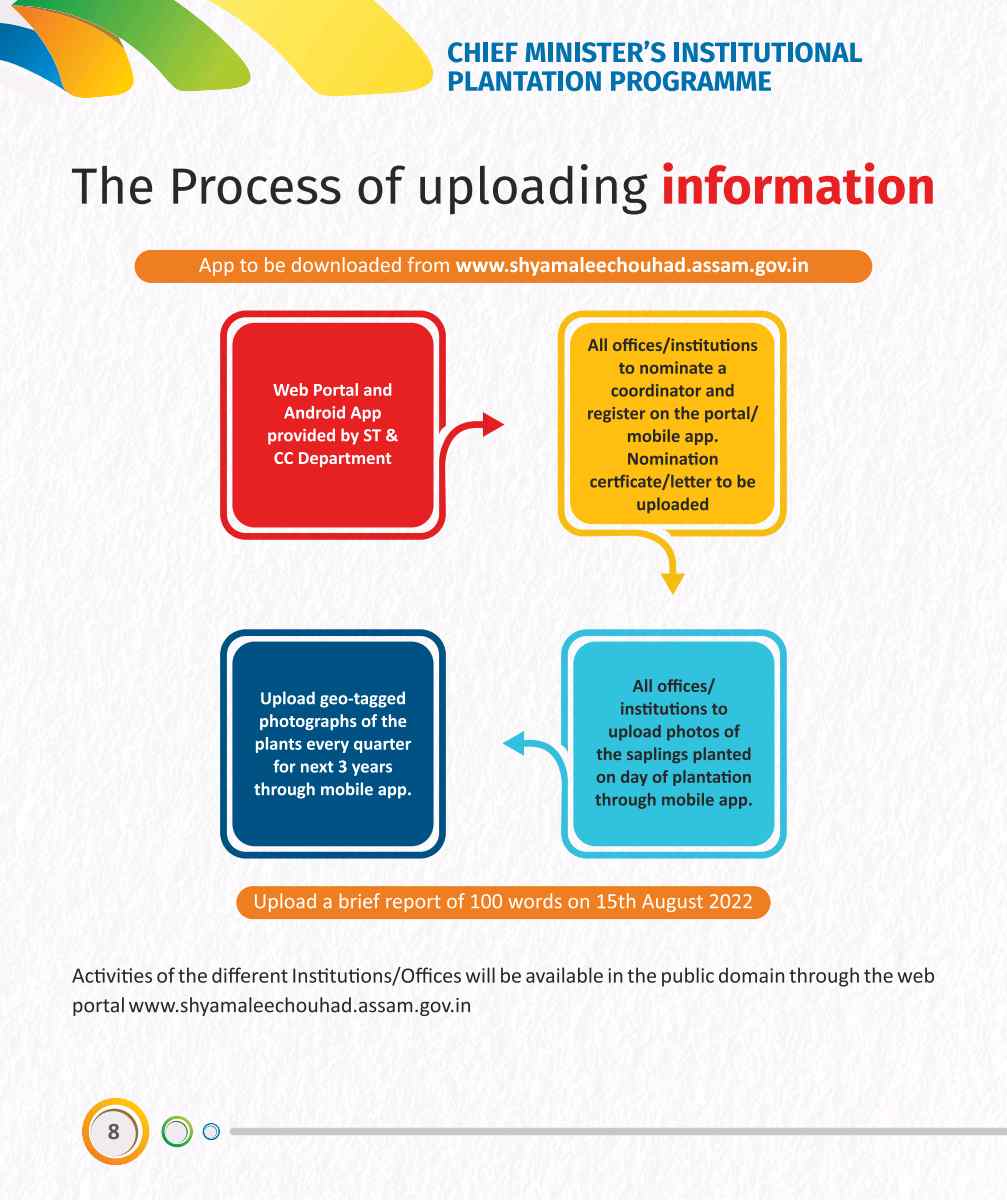
Also Check – Academic Calendar Assam 2022-23 শৈক্ষিক দিনপঞ্জী

